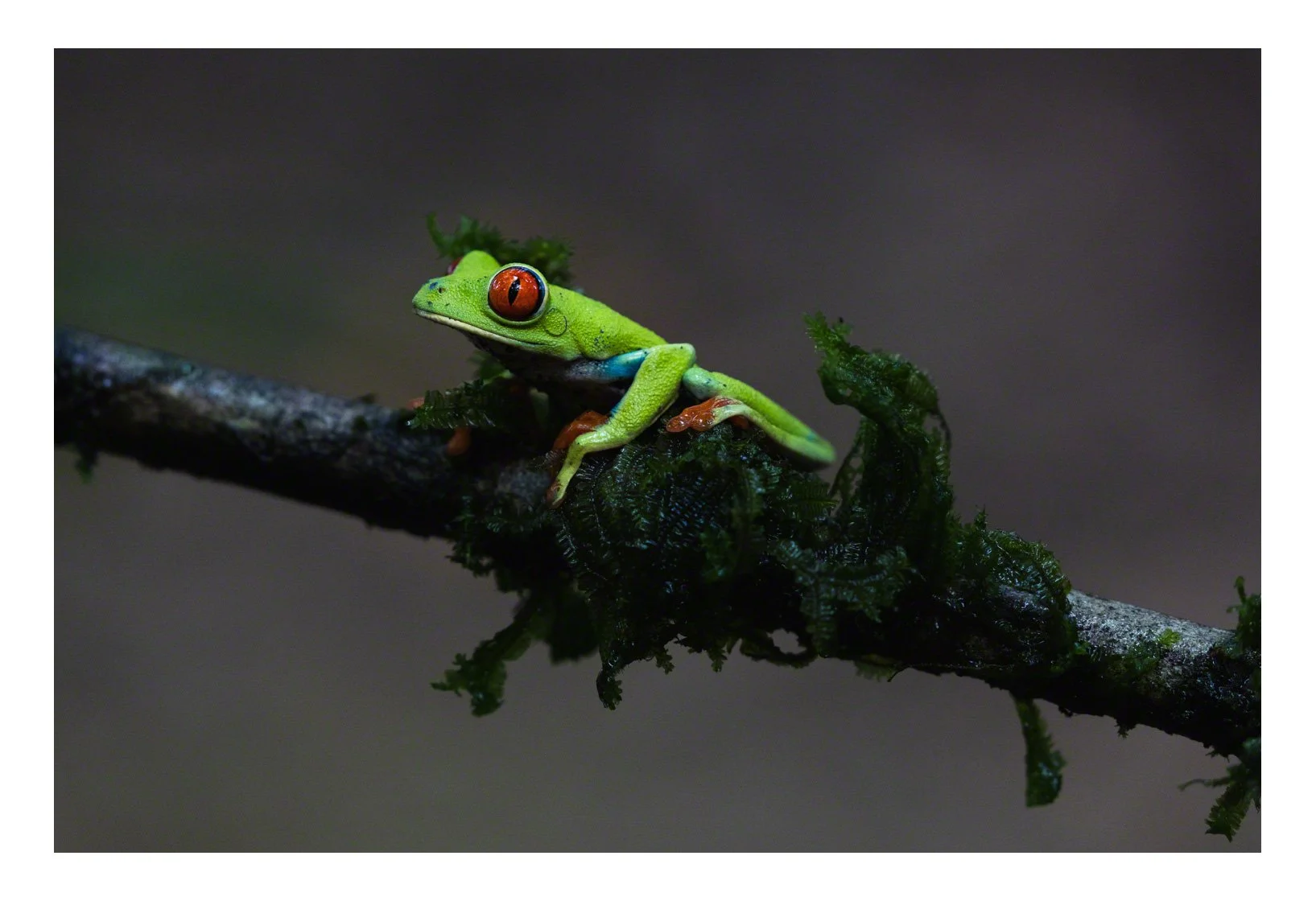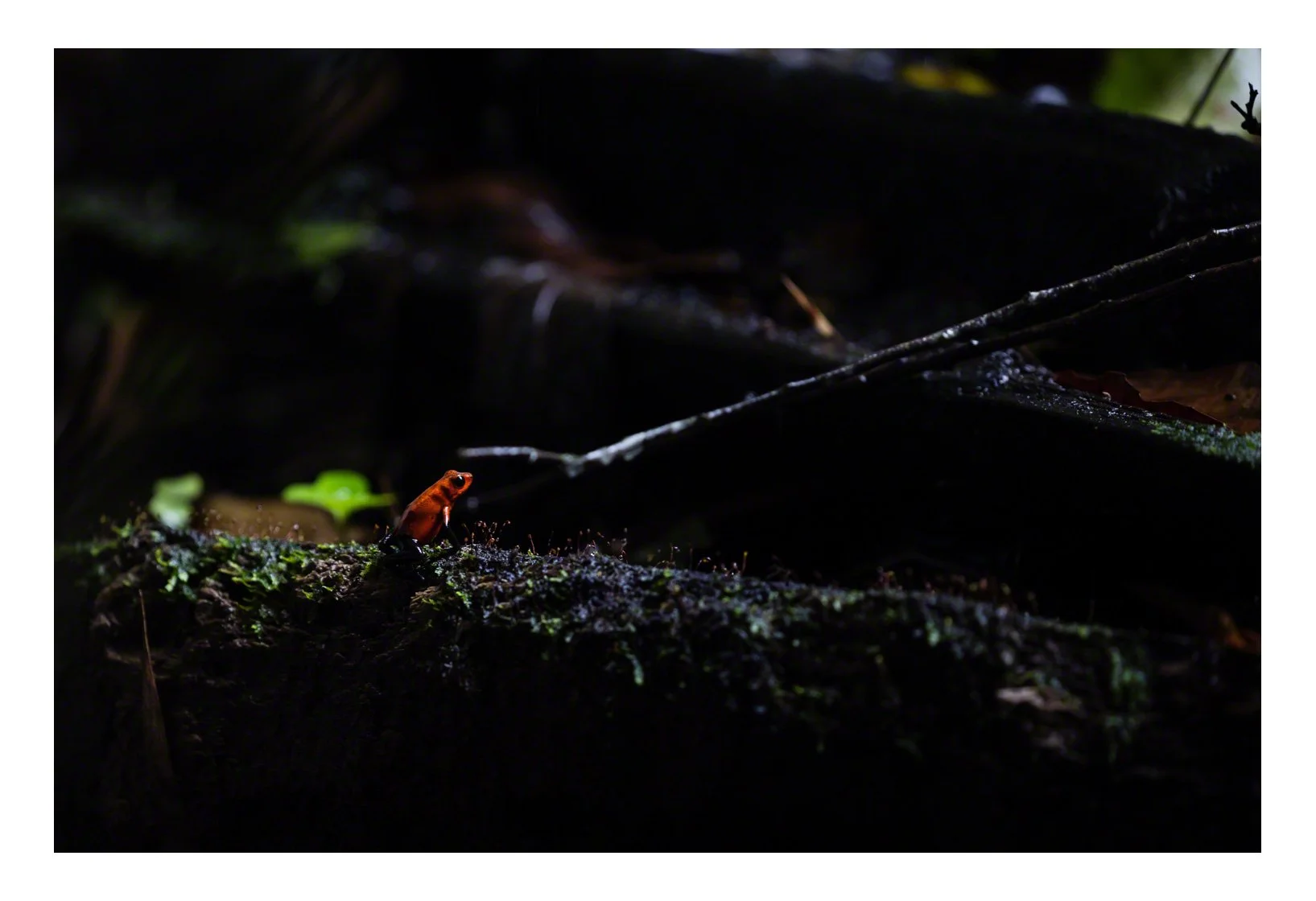
Frogs
of Costa Rica
One of the more iconic tropical frogs around — the red-eyed tree frog. They do indeed spend most of their time in trees, but favour those close to rivers or ponds. Brightly coloured animals can sometimes be a sign of danger, telling potential predators that they’re poisonous. In the case of the red-eyed tree frogs, it’s rather a faux deterrent. They’re not poisonous, but upon revealing their bright red eyes a predator looking for a meal may hesitate just long enough for the little frog to hop away¹.
Along with many other frogs, tree frogs are nocturnal and will get cosy stuck to the underside of a broad leaf during the day to sleep, blending in quite nicely. Rather than regular eyelids, theirs are semi-transparent, meaning that even when catching 40 winks, they’re still on the lookout.
So, while it is possible to see frogs during the day…
…it’s at night when they truly come alive.
When red-eyed tree frogs are ready to reproduce, the males will begin to shake the branches upon which he’s sat in order to scare off any other potential suitors².
Once the female has found an eligible male and chosen him, he’ll hop up onto her back and she’ll carry him around for a few hours while looking for the right spot. That spot will be on a leaf situated above a pond or large puddle.
Once she’s laid her clutch of around 40 eggs, the male will then fertilise them. Given that the fertilisation happens externally, it’s quite possible that other males will hop on in there and have a go at fertilising some eggs as well, so it’s possible that a clutch will be fertilised by multiple males.
After around a week, the tadpoles will hatch around nightfall and then literally fall into the water below³, in what is the beginning of a long and successful career in athletic diving, jumping and all round gymnastics.
References
¹ National Geographic, Red-eyed tree frog
² Caldwell, Michael S.; Johnston, Gregory R.; McDaniel, J. Gregory; Warkentin, Karen M. (2010). "Vibrational Signaling in the Agonistic Interactions of Red-Eyed Treefrogs". Current Biology. 20 (11): 1012–1017. doi:10.1016/j.cub.2010.03.069. PMID 20493702. S2CID 12050308
³ William F. Pyburn (1970). "Breeding behavior of the leaf-frogs Phyllomedusa callidryas and Phyllomedusa dacnicolorin Mexico". Copeia. 1970 (2): 209–218. doi:10.2307/1441643. JSTOR 1441643


